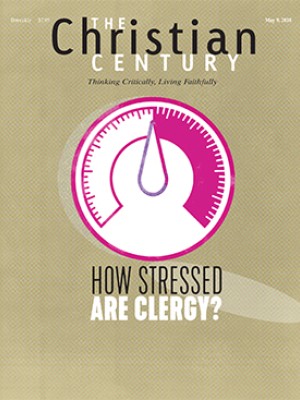June 3, Ordinary 9B (Mark 2:23-3:6)
It's inevitable that the story of Jesus healing in Capernaum won't end well.
This story of Jesus at the synagogue in Capernaum begins oddly and ends badly. The oddness at the beginning is the way the camera lurches immediately, without hesitation, from Jesus’ entrance to the man with the withered hand. Usually a narrator builds a nest before placing the egg, something like, “Jesus went to the synagogue, as was his custom. Some Pharisees, who had confronted his disciples over plucking grain on the sabbath, were there. There was also a man present with a withered hand.” But no, Mark cuts right to the chase and shines the spotlight instantly on the odd man out, the cause of the forthcoming crisis.
Several years ago journalist Bill Bishop published The Big Sort, in which he argued that American mobility allows for a constant shuffling and reshuffling of the social deck, resulting in lifestyle enclaves that are increasingly monochromatic. We seek places to live, work, and play only with people like ourselves. “We have built a country,” Bishop writes, “where everyone can choose the neighbors (and church and news shows) most compatible with his or her lifestyle and beliefs.”
Read our latest issue or browse back issues.
Yes, of course, some people do this, but, honestly, I have never encountered a faith community where this sorting strategy was entirely successful. No matter how strenuously we try to keep our pews filled with folks just like ourselves, the Spirit keeps sending people who disrupt the norm, whose very presence provokes a rethinking of who we are and what we are about. Once, the pastor of an edgy church for people on the margins was written up favorably in the local newspaper and the next week was “freaked . . . out because our weird church was suddenly inundated with people who looked like our parents.” Several years ago, I worshiped with a downtown congregation of demure Canadian Presbyterians whose worship was utterly serene, except for the 20 or so homeless people who danced ecstatically around the communion table during the service and shouted enthusiastic responses during the sermon. Their presence was troubling, no doubt, but also a profound gift of the Spirit, who disrupts all neat sorting schemes.
So with the synagogue at Capernaum. This week it’s a man with a shriveled hand needing help. The last time we were here (1:21–28), there was a man with an unclean spirit shrieking in the middle of the service. God only knows who was present the week before that. So much for sorting.
And as is almost always the case, the presence of the man who stood out, the unsortable man with the withered hand, was clarifying. Are we here to do God’s will, or something else? Jesus and the Pharisees probably do not disagree about the protocols of the sabbath. The Pharisees know full well that saving life and doing good are lawful on the sabbath. It’s just that Jesus’ opponents are not in worship that day to fulfill God’s will. They are there to gather evidence, and as is so often the case, one gets from worship precisely what one seeks. The Pharisees waltz out of the synagogue and into the arms of the Herodians with just enough distorted evidence and alternative facts to plot Jesus’ death.
Jesus wasn’t crucified for his views of the sabbath or of the synagogue and temple, and it wasn’t because he stirred up political revolution. He was killed because he did God’s will, and that was truly revolutionary. Every deed he performed was an expression of God’s will, and that meant that the will of others was confronted. Everything he said was a pronouncement of God’s reign, and that meant the toppling of lesser, though tightly held, kingdoms.
On an episode of This American Life, a young father tells about taking his preschool daughter to lunch on the Martin Luther King Jr. holiday. On their table was the art section of the local newspaper with a drawing of King. His daughter asked who that was, and the father told her, adding, “He’s why you’re not in school today.” He went on to tell her that King was a preacher and that his message was that we should treat everyone equally no matter who they are. She thought about that and then said, “That’s what Jesus said.” He goes on:
And I said, yeah, I guess it is. You know, I never thought of it that way, but yeah. And that is sort of like do unto others as you would have them do unto you. And she thought for a minute and looked at me and said, did they kill him, too?
People who do God’s will run afoul of all who are invested in another will—theirs, that of nationalistic fervor, racial bigotry, or greed. So it was inevitable that the story of Jesus in the synagogue would end badly—at least in the short run—with the religious powers plotting Jesus’ death.
But Mark’s Gospel, when it finally arrives at Easter, incorporates a rereading strategy. The abrupt, seemingly incomplete Easter story leaves readers puzzled and disoriented and then sends them scurrying to explore once more all of these stories in the light of the empty tomb and the risen Christ who has gone on before us. When we come around again to this synagogue story with new Easter eyes, the plotting, the cheap conspiracies, the sinister death threats have all been burned away by the blaze of Easter. All that endures is the resurrection and the one who made that sabbath day an eternal sabbath, who rendered that day of God’s great shalom into peace for us all, who healed a broken man and who continues to heal today, who did the will of God against great odds and makes that freedom available to all.





